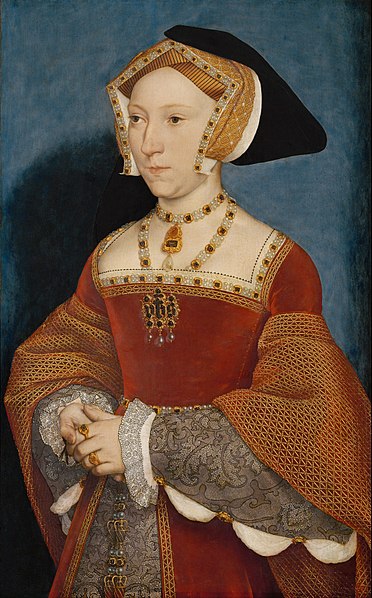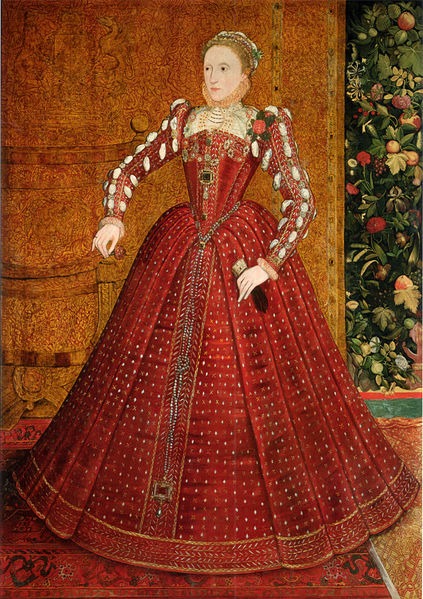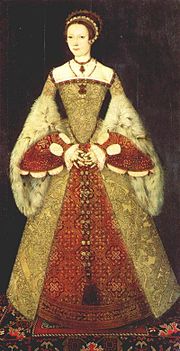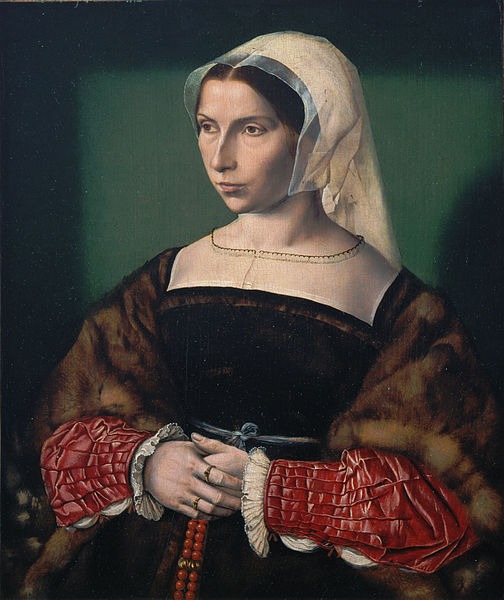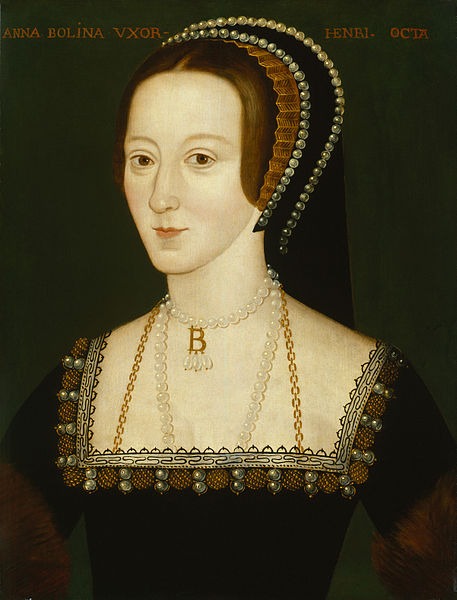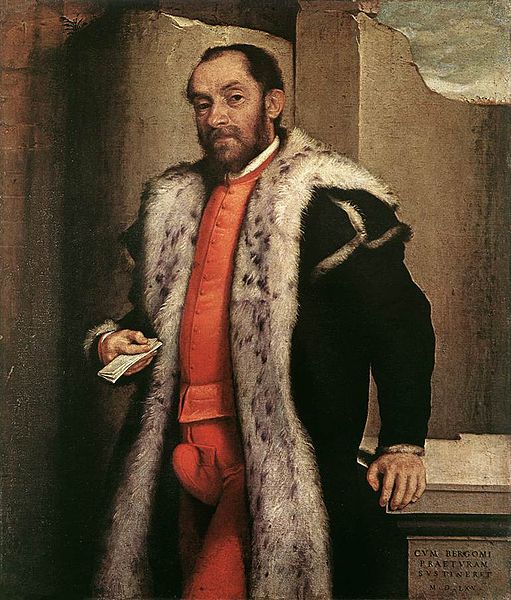The 16th century was a time when fashion was shifting out of the medieval period and transitioning into the Renaissance. The fashion was marked with opulence. Voluminous clothing with so much layers, contrasting fabrics, embroidery, trims and other forms of ornamentation was prominent. The fashion that era – when we look at it in our modern eyes –was excessive and extravagant. For us it looks like “costumes,” but to them it was simply considered as “clothes.”
Here are the major fashion trends of the century:
Square-necked gown
During the early transition to the Renaissance, the weighty square-necked gowns are worn by women, and it was loosely fitted to the body and flared from the hips. Sometimes, the square neckline reveals the chemise and kirtle underneath. It had cuffed sleeves that are wide, and grows wider by the wrist to display the undersleeve attached to the kirtle.
During the 1530s, the French and English fashions evolved to feature square-necked gowns with long sleeves fitted over a corset or pair of bodice with a farthingale. The cuffed sleeves evolved into trumpet sleeves, which are tight on the upper arm and flared down with wide cuffs worn over full undersleeves. By the 1550s, the flaring trumpet sleeves was replaced by full, round sleeves.
Bodice
The silhouette that creates the hourglass shape was popular in France and England. To achieve this, women wear bodice, a petite, detached pieces worn over the kirtle or gown that has a triangular shape ending in a V in front of the waste. It could be high-necked or have a low, square neckline. It is fastened by hooks in front or laced at the side seam.
Corset
The dangerous contraption that made the women’s waists smaller was popular during the 1500s. The corset arose in the first half of the 16th century in Spain. That time, corsets were not worn for achieving a cinched waist and hourglass shape. It was designed to mold the torso into a cylindrical form, flattening and raising the bustline. These are made of hard materials like horn, whalebone, wood, horn or busk. Corsets are layered with fabric, stiffened with glue and tightly laced, and it extends to the length of the torso to just above the pelvic bone.
The corset fashion spread from Spain to Italy, then to France and eventually England. That time, corsets were typically worn with a farthingale that held out the skirts in a stiff cone. Catherine de Medici was known to introduce corsets to France, where the women of the French court adapted the fashion. By the 1550s, corsets became common among European and British women.
Farthingale
A farthingale, or hoop skirt, holds the outer skirts or gowns in proper shape. A piece of wood, metal or bone was placed in the façade of the bodice, and this is followed by the farthingale. In Spain, the cone-shaped farthingale remained in fashion up to the early 17th century. In France, the farthingale was padded which holds the skirts out in a rounded shape at the waist, and it went out of style easily. In England, the Spanish farthingale was worn up to the 1570s, and was replaced by the French farthingale.
Undersleeves
Before, the outer sleeves needed to have a sleeve underneath. These undersleeves wasn’t attached to the undergarment – it was knotted and stitched to the inside of the outer sleeve. Undersleeves are often decorated with velvet, embroidery and gems. Then, the outer sleeves are cut or slashed in a way to reveal the colorful and embellished undersleeves.
French hood
Back then, the square and pointy English hood dominated woman’s headdress fashion, until Anne Boleyn started a trend: the French hood. It’s a veil that has an arched shape that sat on the further back of the head, displaying the front portion of the hair parted in the center. Women stitched some veils and small flaps to stylize the hoods.
Barett
The German barett has a turned-up brim and it has become fashionable with men throughout the period. German women began to adopt hats like men’s baretts early in the century. Women wore it over caps or cauls made of netted cord over a silk lining.
Chemise
During the medieval period, every person wears a chemise. It’s the underwear worn by every man and woman, regardless of class. In the early 1500s, chemise was originally low-necked, made of linen and had a broad and open neckline. It remained hidden beneath the outer clothing. By the mid-century, it evolved into a higher neckline gathered into a narrow band or adjusted by a drawstring.
Zibellino
In the 16th century, a zibellino (also called flea furs) are highly fashionable. It’s made from the pelt of a small furry animal like a mink, ferret or ermine. Wealthy people add ornaments to these, such as jeweled clasps and golden chains. They are worn draped around the neck, or hanging in the waist or carried by the hand. By the way, the plural term for this is zibellini.
More than any garment, this shows us how different their living conditions were during that era. People of the 16th century rarely bathed and, they rarely washedtheir clothes or their bedsheets. Because of this, they become attractive to blood-sucking fleas. The zibellino was a way to lute the fleas into the thick and smelly fur of the animal rather than their own skin.
Doublet
Over the chemise shirt, men wore a doublet with long sleeves. A doublet is a snug-fitting jacket fitted to the man’s body. Doublets are stiff and heavy, and they were often reinforced with boning.
It was worn first in Spain, and spread to Western Europe from the late Middle Ages up to the mid-1600s. When a narrower silhouette became fashionable in Spain from the 1530s, the sleeves of doublets became fuller rather than tight.
Jerkin
A jerkin is an optional, sleeveless, close-fitting jacket worn over the doublet. It is usually made of light-colored leather and usually cut low to the waist to reveal the doublet underneath, with full skirts to the knee. The waistline of the jerkin dipped into V-shape and were padded to hold its shape. During this era, the doublet and jerkin became more colorful and highly decorated. By the 1570s, the padding of the jerkin was exaggerated into a peascod belly.
Hose
Very different from the hose that women wear today, the hose of the 16th century were worn by men for the legs and lower body, but it doesn’t cover the genitals. They were made of wool and were sometimes made particolored. It was worn with the codpiece.
Codpiece
The codpiece covers what the hose doesn’t. As jackets and doublets got shorter, men accidentally expose their genitalia when they sat down or mounted on a horse, so to cover the crotch, men wore codpieces that are made of linen. It was originally created for modesty purposes in the 1300s, but during the 1500s, the codpiece became a fashion statement. Codpieces in the 1500s did double duty – it clothed the genitals, but somehow emphasized them. It’s because codpieces became more elaborate and decorative, and made padded and longer. It made a statement of virility.
Cloaks and capes
Men during the 16th century loved wearing cloaks and capes. They are usually hip-length and often with sleeves. The military jacket like a mandilion was fashionable. During the cold weather, they wore longer cloaks or capes.
Baldric
The baldric is a belt worn diagonally across the chest or around the waist by men. It’s a fashion accessory that also doubles as holder of weapons such as swords, daggers, horns and bugles.

